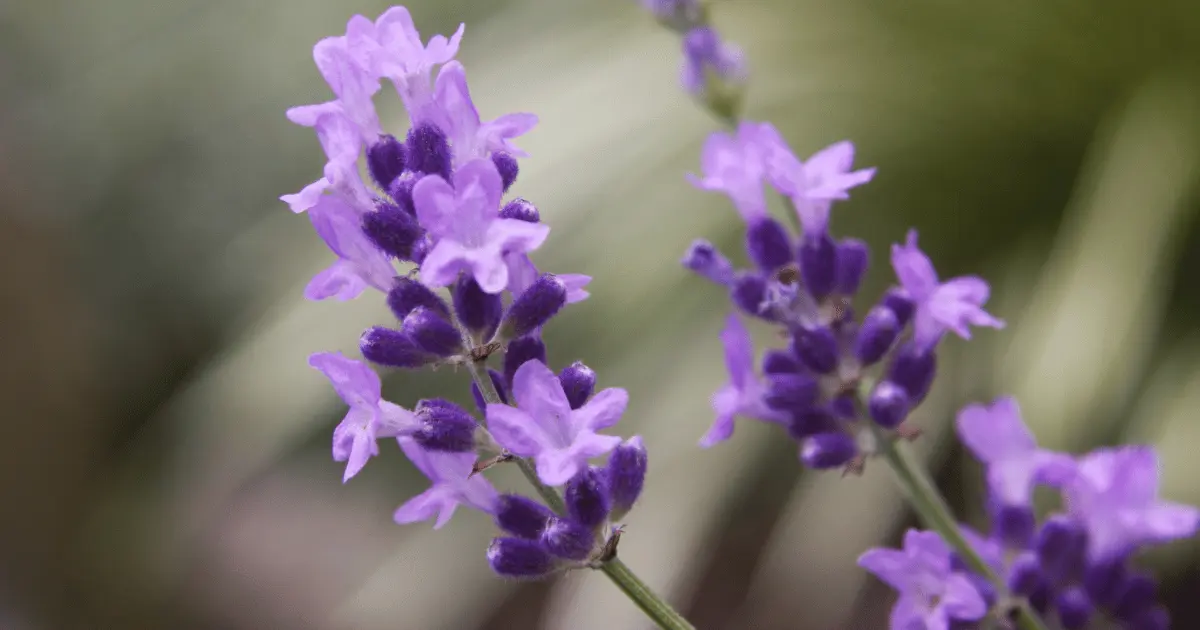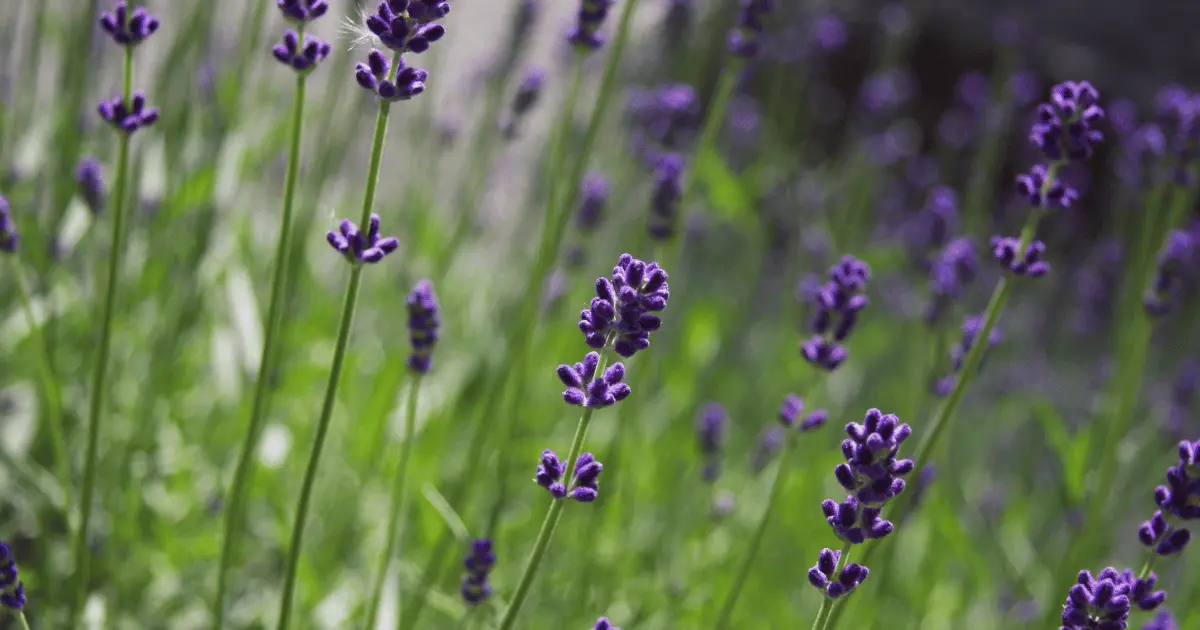Lavender is a very attractive perennial with a wonderful fragrance and colorful blossoms. This plant is easy to grow, and its flowering season is long, so there is an increased chance of productivity.
The plant also possesses remarkable qualities that are beneficial to health; research has shown that Lavender can ease inflammation, help you get better sleep, and play a positive role in fighting depression.
Fortunately, it is possible to plant lavender herbs around your home because they don’t take up much space and the requirements for planting them in pots are easy to follow and keep.
Steps to Growing Lavender in a Pot

Many people enjoy planting Lavender around their homes because of its many amazing properties. You can do so also by following the steps below:
Step 1: Choose the Right Lavender Variety
Lavender plants come in different varieties and are all known to do well in pots, but some are more suited than others to grow in a pot.
The most recommended varieties for you to plant are the English Lavenders- the Hidcote and Munstead. These two plants do well due to good drainage conditions and can withstand colder weather, meaning you can always leave them outdoors.
Additionally, they both have the finest fragrance of all the other lavender varieties. The Hidcote and Munstead’s beautiful flowers come out mid-summer, and their size stays relatively compact at around 12 inches which is good for pots.
However, you do have to prune them constantly. They are also known to live up to 15 years and more if properly cared for.
Step 2: Choose the Best Way to Grow Your Lavender
You can grow your Lavender from seeds or cuttings. To grow from seeds, place the seeds on top of the soil in your pot (the soil should preferably be sandy soil) and cover lightly with a thin layer of soil.
Ensure you plant the seeds in an airy and bright location to receive indirect sunlight, especially the early morning sun. Seeds are known to sprout in two to three weeks after planting.
Cuttings can be from the stem of a lavender plant -about 3-4 inches in length where the leaves join the stem. It is always best to dip the cuttings into root hormones to quicken the rate at which the cuttings form roots. When the roots have formed, transplant them into sandy soil that is warm and moist.
Step 3: Choose an Appropriate Pot
Ceramic or clay pots are the best to consider when choosing a pot. These pots should be porous, which helps dry the soil evenly to prevent rot in the root, and they are thicker to help resist frost damage.
Ceramic or clay pots don’t conduct as much heat as metal or plastic pots. A 12-16 inches deep and across pot is perfect for planting.
Step 4: Place the Pot in a Sunlit Spot
Lavender plants need about 5-6 hours or more sunlight to grow well. So be sure your plants get plenty of direct sunlight every day. Also, consider using a bright mulching material to reflect the sunlight onto your plant.
Choose a soil that is neutral or has a slight alkaline in it with a little organic material as your potting soil. Remember that a good potting mix for Lavender is 70% compost and 30% horticultural grit.
The grit ensures the soil is porous and allows for good drainage while emulating the soil conditions of the native lavender environment.
When fertilizing the new plants, use a balanced fertilizer for the plants once every 8-10 weeks but avoid using a fertilizer then your lavender plant has established, as too much fertilizing can cause harm to the plant.
Step 5: Water Your Lavender Plant
Generously soak your potted plant when watering to encourage the roots to grow deeper in the soil so the excess water escapes through the holes in the pot; this will help increase the chances of your Lavender being resistant to drought.
Your newly potted and planted Lavender needs to be watered once per week in spring and summer during the first year of planting. And during fall and winter, it’s best not to water.
After your Lavender has established, you can water once every two weeks if it doesn’t rain in the spring and summer. Watering in the fall and winter is unnecessary for an established lavender plant as it retains its environmental moisture.
Step 6: Prune the Lavender Plant
Pruning will prevent your lavender shrub from turning into an uncontrollable plant and having a leggy appearance. Pruning once or twice a year is a great way to increase the lavender plant’s longevity and encourage flowering.
It is best to prune your Lavender in early spring, as the flowers appear on new growth. Another great time to prune is in the late summer or early fall by cutting the stems of the Lavender down to an inch above the woody part of the plant to increase air circulation.
Remember never to cut into the woody part of your lavender plant, as this can injure the plant. To do this, leave two sets of leaves above the woody part to encourage healthier and more stable growth.
Be sure to use a clean set of pruning shears that you disinfect with bleach to avoid your lavender plant picking up bacterial diseases.
Step 7: Take Care of Your Lavender Plant
If the winters in your area are harsh and your lavender variety is not English Lavender, it will be best to store your potted Lavender in a garage or indoors to protect them.
Remember, your plants need very little water, especially from November to February. Ensure to only water when the plant starts to wilt, and only the top of the compost is to be watered. Fertilizing is not needed during this period.
Other varieties of Lavender You can Plant in a Pot.
Hidcote and Munstead are hands down the best lavender varieties to plant in a pot. But other varieties also do well in gardens or pots. Here are just a few of them:
Thumbelina Leigh

This variety is a great choice to grow in a container. It is a robust, compact dwarf plant that towers about 10-12 inches. The Thumbelina Leigh has a strong fragrance with two-tone flowers and short spikes.
Nana Alba

The nana alba is a dwarf floriferous lavender that grows to about 12-16 inches in height. It has beautiful, silvery-green foliage and is compact with a bushy dome shape, making it ideal for growing in a pot.
Levenite Petite

The lavenite petite has attractive flowers that are violet in color with a strong fragrance. It measures 12 to 18 inches in height with a compact form, and the plant has short stems and tight foliage.
Rosea

The rose grows to a height of about 24 to 30 inches. The strong-smelling, pink flowers on silvery-grey foliage make it an attractive plant, and it is a bunch variety of lavender plants.
Lavender herbs are easy to grow and can last for years with the proper care and attention. It is also possible to have a lavender pot that needs minimal care while having that beautiful fragrance and colorful blossoms warm your garden.
